|
70. Lasiommata megera (Linnaeus, 1758) / Wall brown / Nymphalidae – Satyrinae
NL: argusvlinder / D: Mauerfuchs /F: la mégère, le satyre
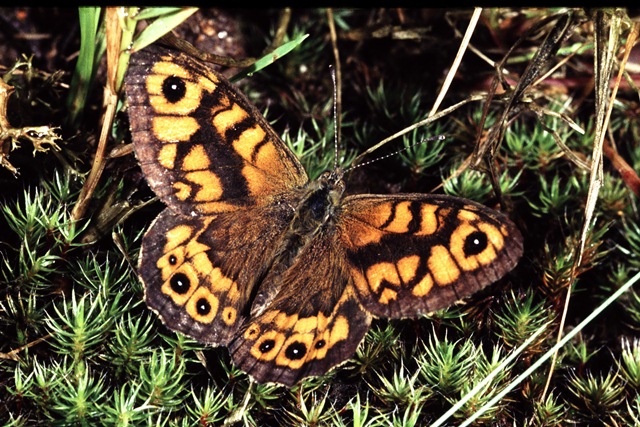 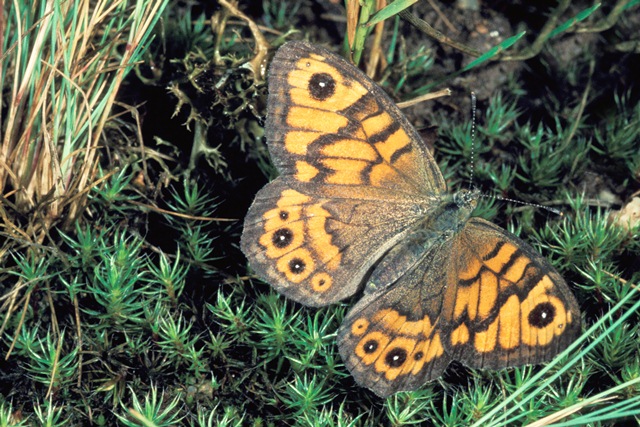 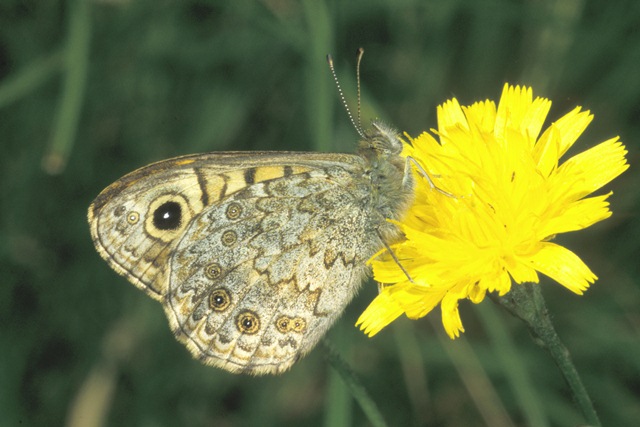
Photographs: Frits Bink ©.
Medium-sized, wing length 22 (19-25) mm. Known from all countries of the Benelux, in dunes and widely spread in the countryside, on roadside verges, railway banks and mildly grazed pastures.
Butterfly is on the wing from early-May until early-June and peeks end-May and again from mid-July until end-September and peeks mid-August. The species is known from maritime and mild continental climates, amplitude 4 to 14. Required heat sum for two generations 700°d and maximum tolerated 2200°d, corresponding climate windows 23 and 40 weeks.
This common and widespread species had declined after 2000 (Bos et al. 2006: 210-212), whereas Pararge aegeria has increased considerably in the countryside at the same time.
Lasiommata megera occurs in at least two generations per year and the limit of its northern distribution in Europe equates to a heat sum of 700°d, whereas the single brooded species Lasiommata maera occurs in a climate of 400°d, near to the north polar circle.
Ecological characteristics
Behaviour over time
Overwintering: larva in third instar, 12-14 mm in length, hidden in a grass tussock.
Reproduction: oviposition starts after 4-6- days when the body contains 36 (32-40) eggs, potential production 5.4 times as much.
Larval feeding periods: in summer brood 4 weeks, overwintering generation in autumn about 48 days in period mid-September until mid-October, in next spring about 43 days from mid-March until end-May.
Generations: two, in warm areas a third generation may be possible.
Spreading of risk: not observed.
Life cycle: egg 8 (5-11) days; larva summer brood 28 (20-38) days, overwintering brood 26-34 weeks; pupa 16 (12-22) days.
Life span of adult: rather long, 3 weeks.
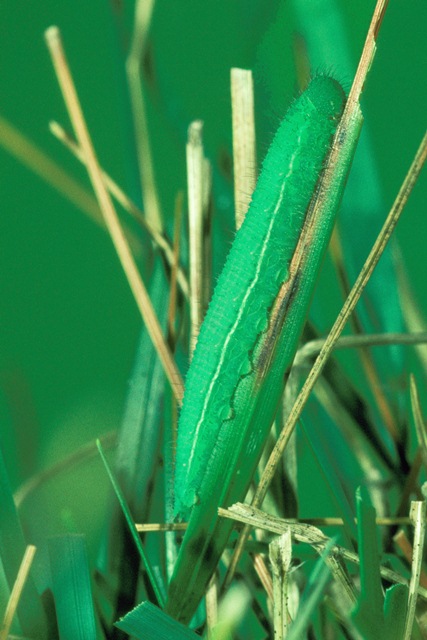 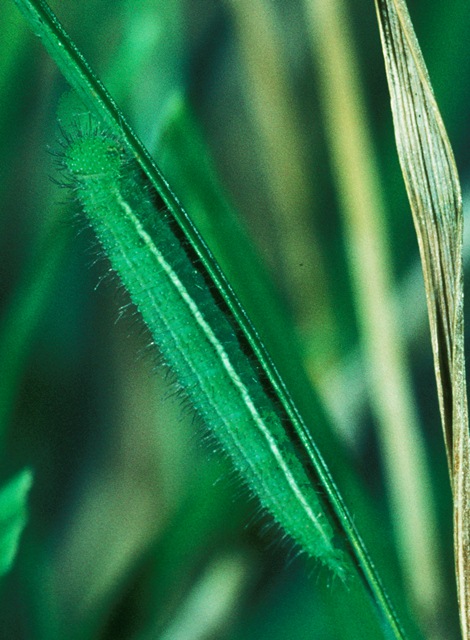
Photographs: Frits Bink ©.
Behaviour in space
From stay-at-home to migrant: stay-at-home, spatial requirement modest.
Finding a mate: male perches.
Orientation in the landscape: medium tall grass vegetation with scattered areas of bare soil.
Oviposition: on distinct tussocks in short grass, also growing on stony walls with sparse vegetation.
Defence
Threats from other organisms: protection by resting adult and larval camouflage.
Threats from the environment: adverse weather in summer and luxuriant growth of the grass.
Feeding habits
Adult: nectar of all kind of flowers.
Larva: regular feeding periods throughout the day.
Larval foodplants
Plant species: Poaceae, in rearing experiment accepted: Bromopsis erectus, Cynosurus cristatus, Dactylus glomarata, Danthonia decumbens, Festuca rubra, Poa pratensis.
Journal
Rearing experiments:
1. Based on specimen from Amerongen, Netherlands:
5 June 1981: old female captured in garden.
14 June: eggs hatched.
20 June: larvae in first instar.
1 August: last adult appeared.
2. Based on specimen from Grebbeberg, Rhenen, Netherlands;
29 August 1981: eggs produced.
2 October: larvae 8-11 mm in length.
28-10-81: larvae still fed activity, 12-14 mm in length.
Overwintered outdoors.
5 February 1982: pot taken indoors.
14 February: one larva started moulting, without previously feeding.
27 March: most larvae in moult.
18 April: larvae nearly fully grown, 31 mm in length.
9 May: two pupae, two fully grown larva, two early last instar present.
15 May: first adult appeared.
Table 70-1. Results of dissections

Remark: the dissection of 5 females on 10 January 1998 originated from a breeding experiment in a greenhouse.
Table 70-1a. Oviposition sequence

Table 70-2. Collection and observation localities
B, Nîsmes, Tiène Bieumont 215 m, 50° 04’ 40”N – 4° 32’ 35”E; 28May 1982.
B, Theux 50° 33’ 20”N – 5° 49’ 50”E; 17 June 1983.
D, Kaub 50° 05’ 36”N – 7° 45’ 43”E; 26 May 1986.
D, Lorch 300m, 50° 02’ 05”N – 7° 47’ 56”E; 26 May1986.
F, Aurel, 400 m, 44° 43’N – 5° 16’E; 29-8-1984; 2 September 1984.
F, Brittany, Telgruc-sur- Mer 48° 12’ 25”N – 4° 22’ 25”W; 29 September 2004.
F, la Bruyère 45° 39’ 01”N – 5° 38’ 09”E; 25 August 1984.
F, la Grande Brière 47° 23’ 42”N – 2° 17’ 22”W; 24 September 2004.
F, Normandy, Saint-Germain-sur-Ay-Plage 49° 13’ 13”N – 1° 37’ 36”W; 31 May 2000.
F, Vosges, Bollenberg, 363 m, 47° 56’ 54”N – 7° 15’21”E; 25 July 1983, 11 June 1984.
F, Vosges, Katzenkoepfle, 565 m, 48° 01’ 54”N – 7° 06’ 04”E; 11 June 1984, 21 August 1984.
Fig. 70-1. Lasiommata megera, phenogram adapted from Fichefet et al. 2008: 223.
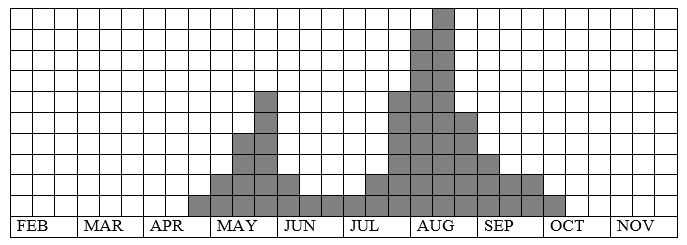
Fig. 70-2. Lasiommata megera, habitat characteristics.
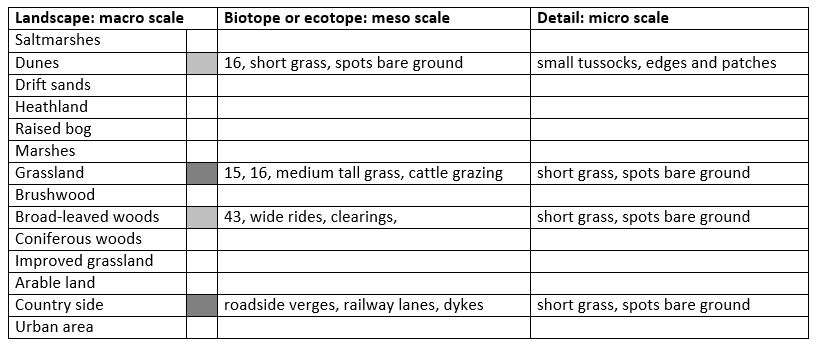
Fig. 70-3. Lasiommata megera, climate matrix, heat-sums 700°d (2nd generation) - 2200°d.
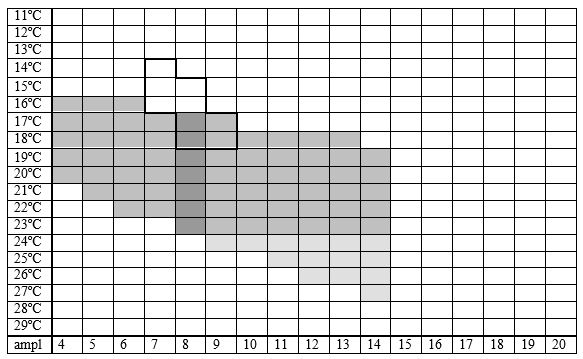
|











